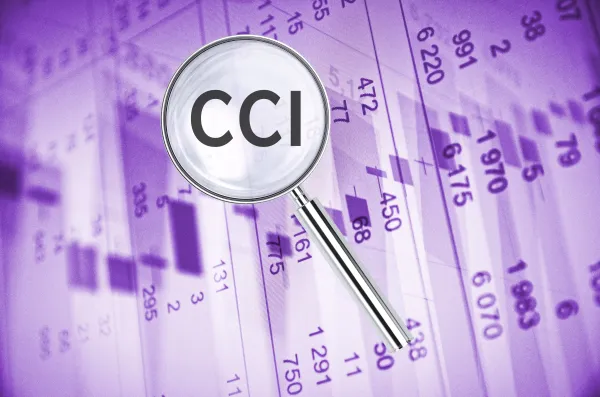Here's the Good — and the Bad — of the 2019 MPFS Proposal

Conversion, flat E/M coding rates highlight CMS suggestions. CMS recently released its annual proposal for the Medicare Physician Fee Schedule (MPFS) rate for 2019, as well as suggestions for several other provisions that could affect your coding. Takeaway: If CMS formally adopts these changes in the coming months, the suggestions in the proposal become policy in 2019. According to a CMS release, the document “includes proposals to update payment policies, payment rates, and quality provisions furnished under the [MPFS] on or after January 1, 2019.” What did our experts have to say about the key coding provisions in the proposal? Read on to find out. MPFS Rate Gets Slight Hike The news that will — and should — get most coders’ attention is the proposed MPFS rate for 2019. According to CMS, the proposed 2019 conversion rate is $36.05, a small increase from the 2018 rate of $35.99, confirms Catherine Brink, BS, CMM, CPC, president of Healthcare Resource Management in Spring Lake, New Jersey. Impact: If CMS ratifies the proposed rate, you can expect slightly higher payment for your providers’ services. Best bet: No one is going to call the MPFS rate increase substantial; if you’re only getting $0.06 more per relative value unit (RVU) on your coding, you’ll need to be extra vigilant about getting the correct code every time on your 2019 claims. Check Out ‘Streamlining E/M Payment’ Provision One of the payment provisions in the CMS proposal is “Streamlining Evaluation and Management (E/M) Payment and Reducing Clinician Burden.” In this element of the proposal, “CMS is proposing a number of coding and payment changes to reduce administrative burden and improve payment accuracy for E/M visits.” The proposal includes: Experts seem to be taking a wait-and-see approach on these proposed changes. “I have read this extensively. There could potentially be [several] ways in which to substantiate the E/M services. This could be a good thing,” says Suzan Hauptman, MPM, CPC, CEMC, CEDC, AAPC Fellow, senior principal of ACE Med in Pittsburgh. However, Hauptman continues, questions remain. “The provider community will want to know how the services will be audited. How will CMS view the documentation? Will these changes still pull from the pockets of the provider community in changing the current set up of the EMR [electronic medical records]?” she asks. Brink has a similar take on the E/M changes, saying that CMS is trying to “streamline E/M payment and reduce clinicians’ documentation burden to focus on patient care over paperwork, and promotes use of EHR by providers to document clinical meaningful information rather than document information only to satisfy billing requirements. CMS is moving toward value-based healthcare, which should improve patientquality of care,” she says. Mary I. Falbo, MBA, CPC, CEO of Millennium Healthcare Consulting, Inc. in Lansdale, Pennsylvania, agrees with Hauptman, saying that “CMS has made it clear with these updates that they are still focused on the shift to value-based care, and that they expect digital medicine to play a large part in that shift. “To this end, this is a good thing,” Falbo continues. What might not be such a good thing is another E/M coding provision in the proposal, experts say. Experts: ‘Streamlining E/M Payment’ Could Be Problematic As Falbo alludes to, there are also potentially problematic areas of the “Streamlining Evaluation and Management (E/M) Payment and Reducing Clinician Burden” portion of the CMS MPFS proposal. The CMS proposal states: “To improve payment accuracy and simplify documentation, we propose new, single blended payment rates for new and established patients for office/outpatient E/M level 2 through 5 visits and a series of add-on codes to reflect resources involved in furnishing primary care and non-procedural specialty generally recognized services.” According to Falbo, this means that CMS is proposing a fixed rate for outpatient office visit codes 99202 (Office or other outpatient visit for the evaluation and management of a new patient, which requires these 3 key components: An expanded problem focused history; An expanded problem focused examination; Straightforward medical decision making …) through 99205 (… A comprehensive history; A comprehensive examination; Medical decision making of high complexity …); as well as 99212 (Office or other outpatient visit for the evaluation and management of an established patient, which requires at least 2 of these 3 key components: A problem focused history; A problem focused examination; Straightforward medical decision making …) through 99215 (… A comprehensive history; A comprehensive examination; Medical decision making of high complexity …). To experts, this sounds like a potential trouble spot. “What is not a good thing … and will most likely compromise patient quality of care, is the proposal to establish a fixed rate for outpatient office CPT® 99202-99205 and CPT® 99212-99215,” Falbo says. Brink concurs, saying that “this could have a negative impact on patient quality of care for E/M services since every provider, regardless of specialty, will be reimbursed the same amount for an E/M service.” If the proposed numbers hold, Falbo says that reimbursement rates for office E/Ms could look like this: ‘Leveling’ of E/M Payments Making Some Nervous While there are some positives to the MPFS proposed rule for 2019, the “automatic” E/M payments have some in the industry a little wary — in no small part due to the unanswered questions that the proposal poses. First off, “the provider community will want to know how the services will be audited. How will CMS view the documentation? Will these changes still pull from the pockets of the provider community in changing the current set up of the EMR?” asks Hauptman. Further, Hauptman asks, “What will the reduced payment for levels two through five do to the physician financially? Patients that are level five are level five for a reason. They are more complicated; requiring more work. If the reimbursement for a high-risk patient is the same as that of a relatively low-risk patient, what will happen to the patient flow and the number of patients seen?”
99201 = $44.00
99211 = $24.00




